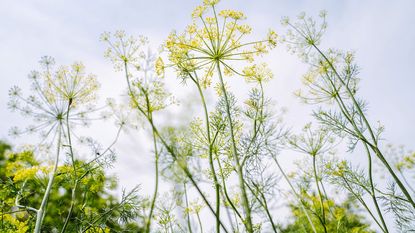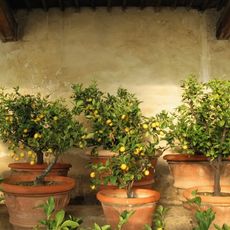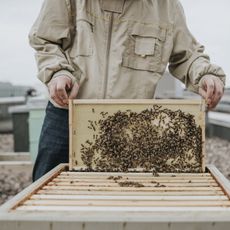Heirloom Dill Plants: Old-Fashioned Dill Varieties And Uses


I blame it on my father, my obsession with pickles that is. He grew up in a post-war home where the Victory Garden was still very much in evidence, which meant pickling was a necessity. I don't discriminate and will eat anything pickled, from onions to watermelon, but my particular favorite is the dill pickle. It's all about the dill flavoring, and it seems I'm not the only one with a fascination for the herb. Let's read on to learn more about the fascinating history of dill weed plants.
History of Dill Plants
According to my pickle pal, Dad, it's getting impossible to find real old-fashioned dill pickles, the kind his mom made. True or just the musings of an aging mind (sorry Dad!), I thought I might try my hand at my Grandmother's recipe. First, though, I wanted to learn a bit more about dill. Dill is steeped in ancient lore. Native to the eastern Mediterranean and western Asia, dill (Anethum graveolens) belongs to the same family as parsley and celery. Ancient Egyptian medical texts refer to the use of dill as far back as 3,000 B.C. What was dill used for back then? It seems the herb was useful in warding off witches as well as being a popular aphrodisiac. To the ancient Greeks, dill indicated that one had considerable wealth, while to the Romans, dill weed was considered good luck. For centuries, many cultures utilized dill medicinally. Dill seed, called "meetinghouse seeds," were given by both Quakers and Puritans to their children to chew on at church to quell growling tummies. This might have something to do with the meaning of dill. Dill comes from the Old Norse 'dylla,' which means to soothe or lull. Old-fashioned dill has long been highly prized and was, in fact, taxed or tithed on many occasions, including when Edward I of England lacked money in the coffers to repair the London Bridge. He did what any monarch at the time would do and taxed dill plants.
About Heirloom Dill Plants
Heirloom dill, like other heritage plants, tends to have better flavor than more modern counterparts. Fresh dill with its licorice-like flavor tastes much akin to fennel and is, in fact, often mistaken for fennel fronds. Varieties of old-fashioned dill include:
- 'Bouquet'
- 'Delikat'
- 'Dukat'
- 'Fernleaf'
- 'Hercules'
- 'Long Island Mammoth'
- 'Mammoth'
- 'Tetra'
- 'Vierling'
Most are taller varieties of dill that can grow from 3-5 feet (1-1.5 m.) in height, but some, like 'Fernleaf,' are dwarf varieties that only get to around 12-18 inches (30-46 cm.) tall. Some are more suitable for delicate seasoning of fish or summer squash while others, like 'Mammoth,' are the quintessential old-fashioned dill perfect for pickling. So now that I've found the perfect pickling dill, I'm bound and determined to make some old-fashioned dill pickles. After all, my pickle pal and I are in good company; 2.5 billion Americans crave these sour treats just as much as we do.
Gardening tips, videos, info and more delivered right to your inbox!
Sign up for the Gardening Know How newsletter today and receive a free download of our most popular eBook "How to Grow Delicious Tomatoes."

Amy Grant has been gardening for 30 years and writing for 15. A professional chef and caterer, Amy's area of expertise is culinary gardening.
-
 Want a Backyard Mini Orchard? Create Your Own Container Orchard
Want a Backyard Mini Orchard? Create Your Own Container OrchardEasier to care for in small spaces, a backyard mini-orchard makes sense for busy gardeners and juicy fruit is the reward.
By Teo Spengler
-
 Urban Beekeeping Guide: Top Tips For Raising Bees In The City
Urban Beekeeping Guide: Top Tips For Raising Bees In The CityUrban beekeeping can be a rewarding and appreciated pastime, but first be sure it’s legal in your city and learn the ropes of beekeeping.
By Mary Ellen Ellis